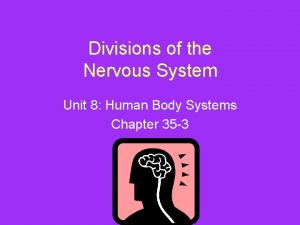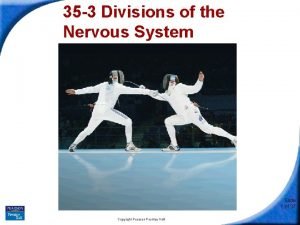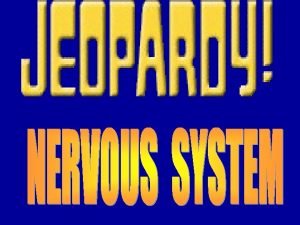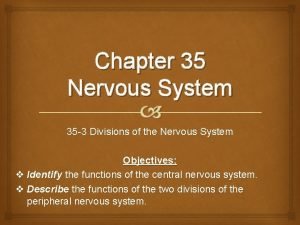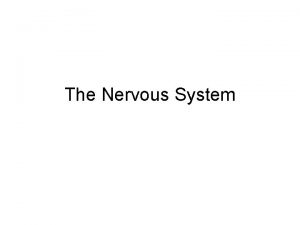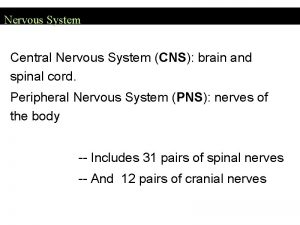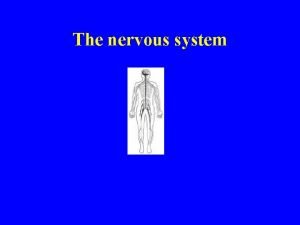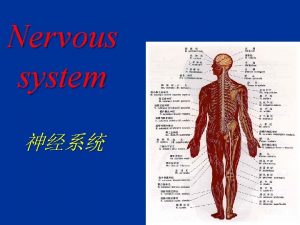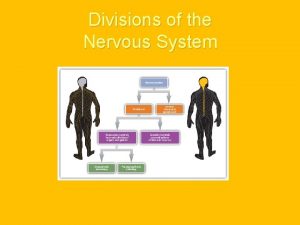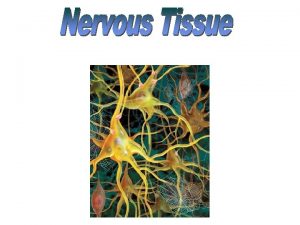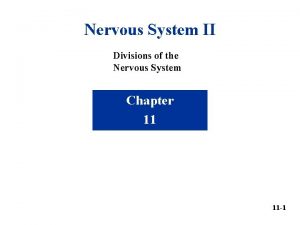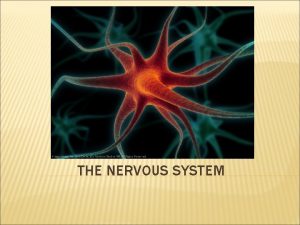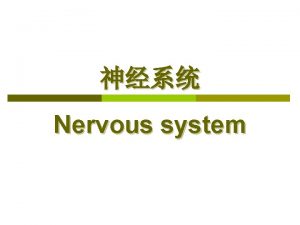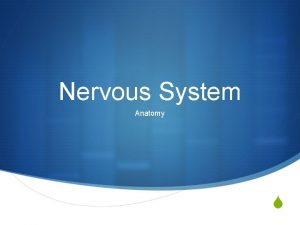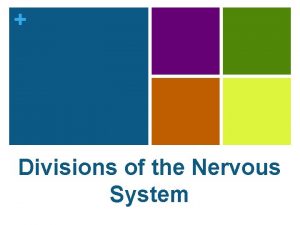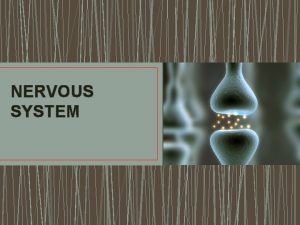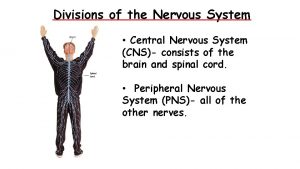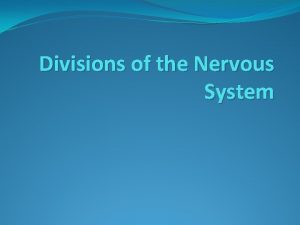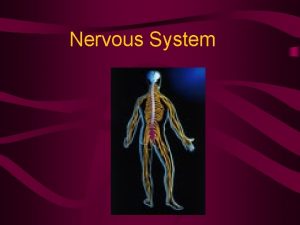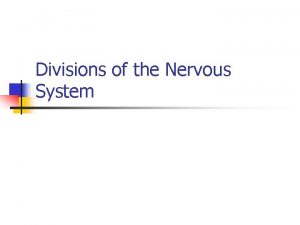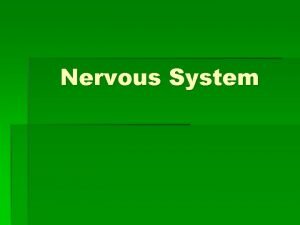35 3 Divisions of the Nervous System Page



















- Slides: 19

35 -3 Divisions of the Nervous System Page 901

A. The Central Nervous System (CNS) • 1. The CNS is made up of the brain and spinal cord.

A. The Central Nervous System (CNS) • 2. The function of the CNS is to send messages, process information, and analyze information.

B. The Brain • 1. The cerebrum is the largest region of the human brain.

B. The Brain • 2. The cerebrum controls voluntary (controlled) actions of the body.

B. The Brain • 3. The cerebellum is the 2 nd largest region of the brain located in the back of the skull.

B. The Brain • 4. The brain stem connects the brain and spinal cord.

B. The Brain • 5. The thalamus receives messages from all the sensory receptors and sends the information to the cerebrum.

B. The Brain • 6. The hypothalamus is the control center for recognition and analysis of hunger, thirst, fatigue, anger, and body temperature.

C. The Spinal Cord • 1. The spinal cord processes some reflexes.

C. The Spinal Cord • 2. A reflex is a quick automatic response to a stimulus.

D. The Peripheral Nervous System (PNS) • 1. The PNS is made up of all the nerves that are outside of the brain and spinal cord.

D. The Peripheral Nervous System (PNS) • 2. The sensory division sends impulses from sense organs to the central nervous system.

D. The Peripheral Nervous System (PNS) • 3. The motor division sends impulses from the central nervous system to the muscles.

D. The Peripheral Nervous System (PNS) • 4. The somatic nervous system controls conscious movements, such as muscle movement.

D. The Peripheral Nervous System (PNS) • 5. A reflex arc includes a sensory receptor, sensory neuron, motor neuron and effector.

D. The Peripheral Nervous System (PNS) • 6. The autonomic nervous system regulates involuntary movements.


 8 divisions of the nervous system
8 divisions of the nervous system 35-3 divisions of the nervous system
35-3 divisions of the nervous system Divisions of the nervous system
Divisions of the nervous system Section 35-3 divisions of the nervous system
Section 35-3 divisions of the nervous system Peripheral nervous system
Peripheral nervous system Division of central nervous system
Division of central nervous system Efferent division of nervous system
Efferent division of nervous system Part of nervous system
Part of nervous system Label the parts of the main division of the nervous system
Label the parts of the main division of the nervous system Neuron process
Neuron process Sensory input and motor output
Sensory input and motor output Processes of nerve cell
Processes of nerve cell Nervous system and digestive system
Nervous system and digestive system Endocrine system vs nervous system
Endocrine system vs nervous system Mechanism of action of hormones
Mechanism of action of hormones Endocrine system
Endocrine system Apa title
Apa title Chemical messengers of the nervous system
Chemical messengers of the nervous system Bristle worm phylum
Bristle worm phylum The nervous system is made up of
The nervous system is made up of
